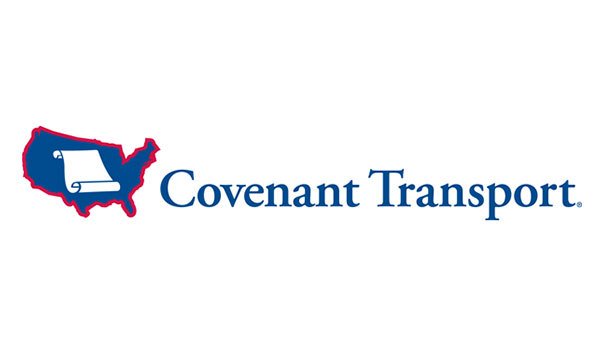DOT Physicals / HOS Limits
There is often confusion about the DOT physical and whether or not a routine drug test should accompany the exam. First, it is important to note that the DOT medical exam is not exclusive to just commercial driver license holders. It is applicable to drivers who operate the following vehicle as defined in §390.5:
Commercial motor vehicle means any self-propelled or towed motor vehicle used on a highway in interstate commerce to transport passengers or property when the vehicle: 1) Has a gross vehicle weight rating or gross combination weight rating, or gross vehicle weight or gross combination weight of 10,001 pounds or more, which ever is greater; or 2) Is designed or used to transport more than 8 passengers (including the driver) for compensation; or 3) Is designed or used to transport more than 15 passengers, including the driver, and is not used to transport passengers for compensation; or 4) Is used in transporting material found by the Secretary of Transportation to be hazardous under 49 U.S.C. 5103 and transported in a quantity requiring placarding under regulations prescribed by the Secretary under 49 CFR, subtitle B, Chapter I, subchapter C.
As you can see, this definition includes both CDL and non-CDL types of vehicles. Based on this alone, DOT drug and alcohol tests cannot be conducted on a great number of drivers who are subject to DOT physical requirements. DOT drug and alcohol testing is only applicable to those individuals operating a CMV as defined in §382.107 & §383.5 (e.g. requires a CDL).
Anyone operating a vehicle not requiring a CDL cannot have a DOT drug and alcohol test conducted on him/her. Testing such a person leaves a question of legalities.
Convenience vs. Regulations
Many motor carriers, out of convenience, send a driver for a DOT pre-employment drug screen at the same time as the DOT physical. Technically, a carrier could send the driver to two separate locations on two separate days, since the requirements are not tied together.
Many motor carriers use medical clinics for their physical and drug tests and this could lead to grave problems because when an existing driver goes in for a recertification of his/her DOT physical, a DOT drug test should not be conducted. It would be a misrepresentation of the test as being required under Part 382, if a carrier were to do so. (§382.113).
Where Confusion Sets In
Prior to the creation and implementation of Part 382, DOT drug testing was positioned in Part 391, Subpart H. Much of today's confusion comes from these regulations that have been removed from Part 391 and cease to be a requirement. In the past, a DOT drug test was required at the time of a physical recertification. However, this was removed from the regulation when Part 382 was implanted in: January 1, 1995, for carriers with more than 50 drivers; and January 1, 1996, for carriers with less than 50 drivers.
If a carrier requires a drug or alcohol test during recertification of physical requirements, it must be represented to the driver as a non-DOT test under their company policy.
Consider the following of non-DOT testing: 1) It is important to inform the clinic that the test must be conducted outside of your DOT program so that they know to set a non-DOT chain of custody; 2) By keeping the two testing programs (DOT and non-DOT) separate (e.g., two lab accounts), the non-DOT test results will not (and should not) appear on the lab summary for DOT compliance; 3) If a driver tests positive or refuses to be tested on a non-DOT drug or alcohol test, it holds no DOT consequences under the Return-to-Duty Process, and is not considered a DOT drug and alcohol violation. The driver's ability to continue in a safety-sensitive function is not affected. Any actions taken by the motor carrier would be based on their written drug and alcohol policy and under their independent authority.
In addition, the carrier cannot report a non-DOT offense to new or prospective employers during background checks under §40.25 & §391.23. It is strongly suggested that you contact a labor attorney before releasing any non-DOT information.
Hours-of Service Limits
The federal hours-of-service rules say that you must stop driving a commercial motor vehicle (CMV) upon reaching certain limits, including the 11-hour driving limit, the 14-consecutive-hour limit, the 60- or 70-hour weekly limit, and others. But do you have to stop working?
People often confuse the driving limits with working limits. The fact is, the Federal Motor Carrier Safety Regulations do not directly restrict how much work people can do, as long as they obtain enough rest before getting back behind the wheel. Drivers can work 24 hours per day, 7 days per week, without violating the federal hours-of-service rules, as long as they do NO CMV driving after reaching the limits.
For example, consider the 11- and 14-hour limits for drivers of property-carrying CMVs, found in 49 CFR §395.3(a). This regulation clearly states that you cannot "drive" a CMV after reaching those limits. Nowhere does the rule say you have to stop working entirely, or that you cannot operate other types of non-CMV vehicles.
Would you never violate the rules by continuing to work beyond the limits? Not exactly. If you wish to claim either of the following exceptions, you have to stop working within a certain period of time (see the regulations for details): Short-haul exception (§395.1(o)): This exception to the 14-hour limit allows the driver of a property-carrying CMV who returns home each day to drive after the 14th hour after coming on duty, but not after the 16th hour, once per week. However, when using this exception, the driver must be released from duty within 16 consecutive hours after coming on duty. So, if the driver chooses to use the exception but continues working (not driving) beyond the 16-hour limit, the driver is in violation of the rules.
Note that the "non-CDL 16-hour exception" for drivers who stay within a 150-air-mile radius and who are not required to hold a commercial driver's license (§395.1(e)(2)) does NOT require the driver to be released from duty within a certain time period, as long as there is no more CMV driving after the 16-hour limit.
The 100-air-mile radius exception (§395.1(e)(1)): This exception allows drivers who stay within 100-air-mile radius to use time records instead of records of duty status (logs). A driver who chooses to use this exception, however, must be "released from work within 12 consecutive hours." This means that no work of any kind can be done for the motor carrier after those 12 consecutive hours are complete, until the driver obtains adequate rest. But what if there is work to be done? A driver can continue working after the 12-hour limit and avoid a violation simply by completing a standard log for the day.
The above information is based on the Federal safety regulations and may not apply in every state. Check with your state for details if you are not subject to the Federal rules.
Written By: Wayne Schooling
















